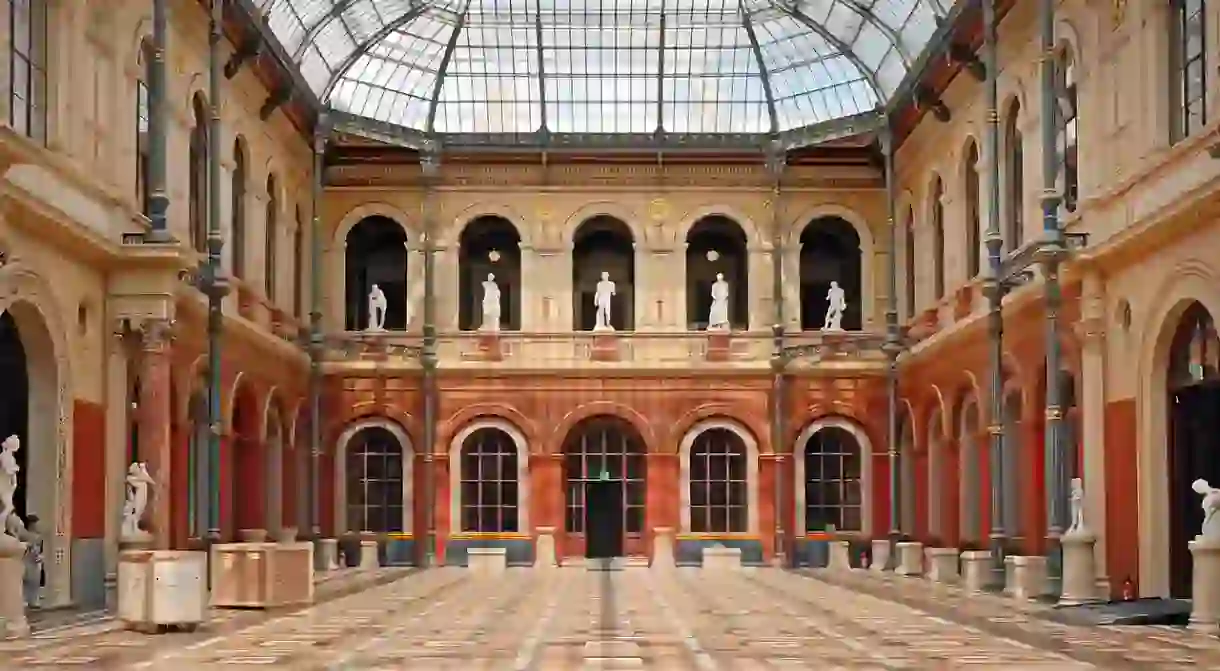A Brief History Of The École Des Beaux-Arts

With an alumni that boasts figures integral to Impressionism, Cubism and Pointillism, the story of the École Des Beaux- arts, or School of Fine arts,should be a staple ingredient in every culture vulture’s knowledge set. Here we give you brief introduction to its history, development and notable alumni. Whilst the name is an umbrella term for several institutions throughout France, this article will focus on Paris’s École Supérieure des Beaux arts, which can be found on the left bank of the Seine, opposite the Louvre Palace.
First, there was the Academy
The story begins in 1648 with its founding by Cardinal Mazarin, the Italian diplomat and politician who was chief minister for the king of France, the five year old Louis XIV.
At its foundation it was named the Académie des Beaux arts, as this was the term given to institutions of learning during the late Middle Ages in Europe, rather than school. Academy had, and still has, connotations of the ancient classic schools of thought and art. It was intended to teach the best and brightest students the arts of architecture, painting, drawing, sculpture, model, gem cutting and engraving.
France had long seen itself as somewhat of an intellectual centre of international fine art and high culture, and this academy could rival the great academies of Italy, such as the Florentine Academy of the art of Design and the Academy of St Luke in Rome. A straightforward bifurcation of the academy was established, into one curriculum for art & sculpture, and another for architecture.
The legendary painter Charles Le Brun gave the first class on February 1 of that year.

Evolution
Similar to our modern Erasmus program that allows students a fully-funded year of study in Europe, the Prix de Rome was awarded to exceptional art students. It gave them three to five fully state-funded years of study in the Acadamie de France at Rome, a prestigious school set up in 1666 by a now older Louis XIV.
The King also brought it under government control, mostly in order to find students to populate his palace at Versailles. During this time, the Academy become an intellectual centre of architecture and art: provoking debate and creating philosophers on architecture.
It was, however, conservative in its methods and output. It drew primarily from the classical Greek and Roman arts. Progression in the academy was dependent on following a rigorous course structure.
Growth of Experimentation
As new, more radical and experimental forms of art emerged in the 19th century, such as Impressionism and Expressionism, the École was increasingly seen as too rigid in its methods. Claude Monet famously refused to attend due to this, though other Impressionists did and went on to join him making a name for themselves.
Rival schools opened up that had a more open and flexible approach to artistic style. However, the Academie remained the standard by which other’s output was judged and still represented the basic teaching model on which others could elaborate or modify.
It remained a government institution throughout the tumultuous late 18th century and early 19th century, and contributed greatly to the preservation movement in the 1830s. In 1863, it was named an École rather than an Academie, as Napoleon III christened it a private institution.
Duban and the École’s architectural development
Prior to the Revolution, the site of the École had been the monastery of the Petits Augustins, a long aisle-less chapel with a western cloister and a large garden. Once all ecclesiastical property had been confiscated by the revolutionaries, the École’s activities were suspended temporarily.
Then, in 1816, the newly-restored Bourbon dynasty ordered the restoration of the École Des Beaux- arts. It was given a home in the site of the Musée Des Monuments Français that now encompassed the monastery; a site that had been developed by Alexandre Lenoir to salvage French architecture during the chaos of the Revolution (that museum can now be found in Trocadero).
It had evolved past its original monastery, cloister and garden structure to a sprawling site. A figure often cited as influential to its architectural development is its chief architect of the early 1800s, Felix Duban.
He envisaged the Palais des Études, the main building of the site, functioning as a museum or showroom rather than a teaching building. He cleared rooms for exhibitions and reinforced its role as the focal centre of the campus. Meeting with much resistance from authorities at first but eventually gaining consent for his plans, he is largely responsible for the Palais Des Études’ current style and its function in the site as a whole.

Notable Alumni
There are several household names in architecture, sculpture and painting that graduated from the École des Beaux- arts at one point or another.
Camille Pissarro, the influential landscape artist who lived in the second half of the 19th century, entered the school in 1855. He fell in with more radical circles, including with Monet, and thus much of his work was rejected by the establishment. One of these was a fellow École student, Pierre Auguste Renoir. Together, they put on an independent show, calling their work Impressionism after a critic labelled their pieces ‘impressions’ rather than paintings.
It’s not just Impressionism that has alumni from the École des Beaux- arts to thank for its creation. Pointillism, the method of using small dot-like strokes, was founded by George Seurat, who studied there in 1878 before doing his military service. And Cubism, most famously attributed to Picasso, has its co-founder in Georges Braque, who studied there at the end of the 19th century.
Whilst not pursuing it as a career, the well-known pilot and writer Antoine de Saint-Exupery studied architecture there just after World War II, while Aristide Maillol, most famous for painting female nudes, entered the school in 1885.
Did you know – Culture Trip now does bookable, small-group trips? Pick from authentic, immersive Epic Trips, compact and action-packed Mini Trips and sparkling, expansive Sailing Trips.













